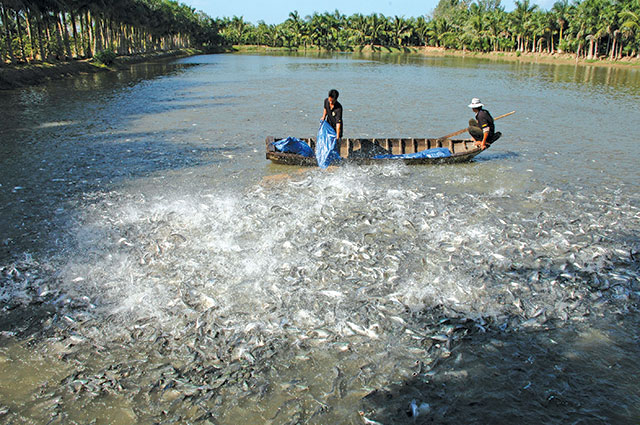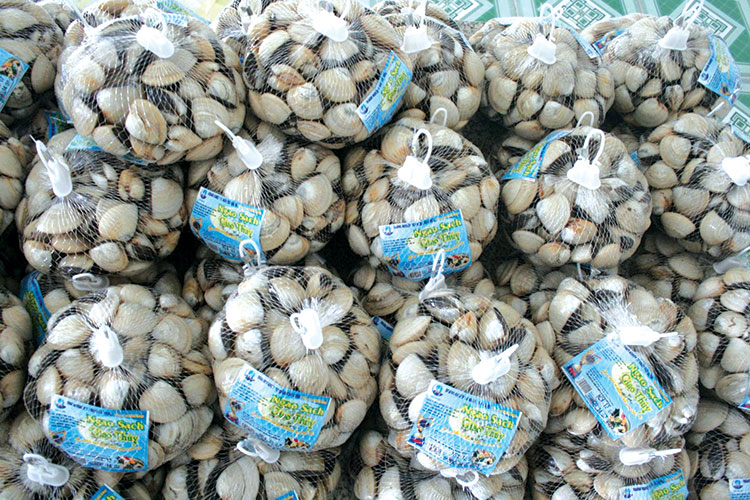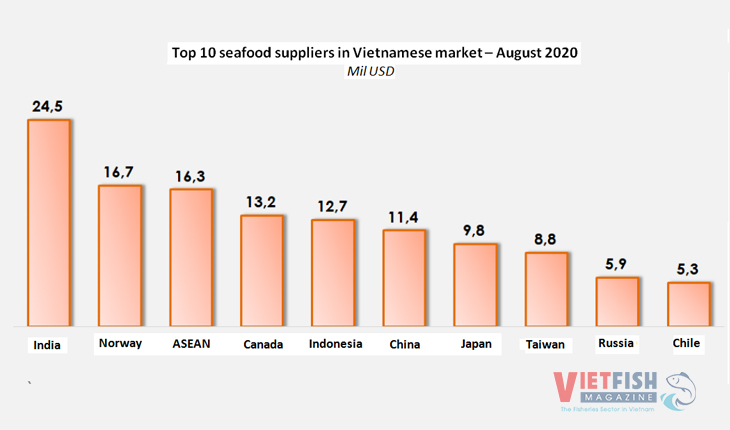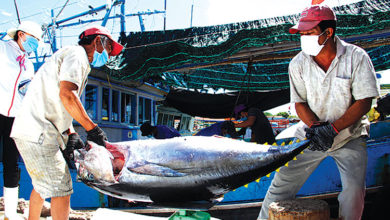Vietnamese pangasius seeks new potential markets
After two decades of growth, Vietnamese pangasius industry now faces challenges as key markets like the US, China, and the EU impose stricter standards and sustainability demands. Expanding into new markets is crucial to maintain growth and boost product value.
Vietnamese pangasius products are present in over 140 countries, but the HS Code 03 category (including frozen whole fish, cut portions, dried and sun-dried fish) has seen significant growth mainly in select markets. In the first four months of 2025, China, Colombia, Iraq, Saudi Arabia, and Thailand ranked as the top importers of these products.
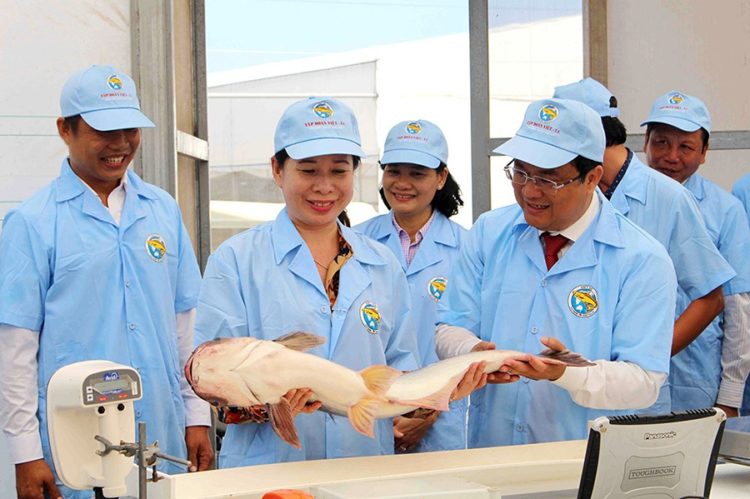
According to Vietnam Customs, exports of dried and frozen pangasius products under HS Code 03 reached USD 110 million, up 11% year-on-year. March recorded the highest export value at USD 32 million.
China and Hong Kong accounted for 54% of total exports in this category, with shipments valued at USD 60 million, a slight 1% decline compared to the same period last year. Following them were Colombia (USD 8 million, down 23%), Iraq (USD 6 million, up 192%), Saudi Arabia (USD 4 million, up 127%), and Thailand (USD 3 million, up 31%).
While China and Thailand primarily import frozen pangasius fillets (HS Code 0304), a longstanding flagship product for Vietnam, Colombia, Iraq, and Saudi Arabia have stronger demand for other forms such as frozen whole fish, cut portions, and dried or sun-dried fish. This reflects varying consumer preferences, distribution channels, and usage purposes across different regions.
China and Thailand favor pangasius fillets
China remains the largest importer of Vietnamese pangasius, with the majority being frozen fillets. Consumers in major cities prefer ready-to-cook products that are convenient for hotpot, frying, grilling, or steaming. Pangasius fillets are also seen as an ideal substitute for cod or salmon amid rising scarcity and high prices of ocean fish.
Similarly, Thailand, home to a well-developed seafood processing industry, primarily imports frozen pangasius fillets for further processing or retail packaging. As a major re-exporter of processed fish products, Thailand plays a key role in the pangasius value chain across export, domestic, and re-export markets.
Colombia, Iraq, and Saudi Arabia: Niche markets for cut and dried pangasius
Unlike China and Thailand, these three markets primarily import pangasius products under HS code 03 that are not fillets. They tend to favor frozen whole fish, cut portions, and dried pangasius, reflecting a distinct market approach.
Colombia – A promising market with unique preferences
Colombia, an emerging market in Latin America, prefers fresh or frozen whole and cut white fish rather than fillets. Local consumers favor grilling or stewing whole pieces, often preparing meals at home or in traditional restaurants. This gives whole and cut fish a clear price advantage and aligns well with local cooking habits.
Additionally, Colombia’s import of pangasius fillets is limited due to stringent technical barriers concerning chemical residues, moisture levels, and water content in fillets. Frozen whole and cut fish are easier to regulate and meet the demand for affordable products, a crucial factor for the country’s middle and lower-income consumers.
Iraq – A major market for frozen white fish cuts
In Iraq, pangasius is popular across major Middle Eastern food chains. Consumers usually buy frozen whole or cut fish for soups, frying, or grilling. The traditional Iraqi dish “Masgouf” often uses whole or thick-cut river fish. With its white, tender flesh, few bones, and low cost, pangasius is gradually replacing native river fish, which are becoming scarce and expensive.
Limited food processing infrastructure restricts demand for pangasius fillets needing deep-freezing and complex logistics. Frozen cut portions, however, are easier to store, transport, and keep under standard conditions.
Saudi Arabia – Religious preferences and affordable protein demand
Saudi Arabia stands out as a steady importer of Vietnamese pangasius, primarily consuming frozen whole fish, cut portions, and notably dried pangasius, especially during Ramadan and traditional meals. In Muslim households, clear visibility of the fish’s origin, size, and physical form is essential to ensure the product’s religious “purity.” As a result, whole frozen fish, cut portions, and dried fish are widely accepted for family meals, traditional restaurants, and religious gatherings.
Additionally, Saudi Arabia’s large expatriate workforce drives high demand for affordable protein. Frozen and dried pangasius serve as practical, cost-effective options for communal kitchens, military barracks, and industrial zones.
VFM



